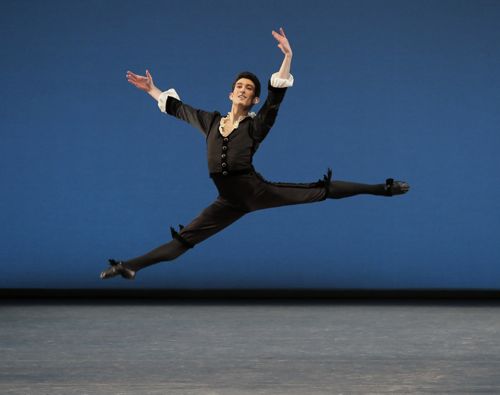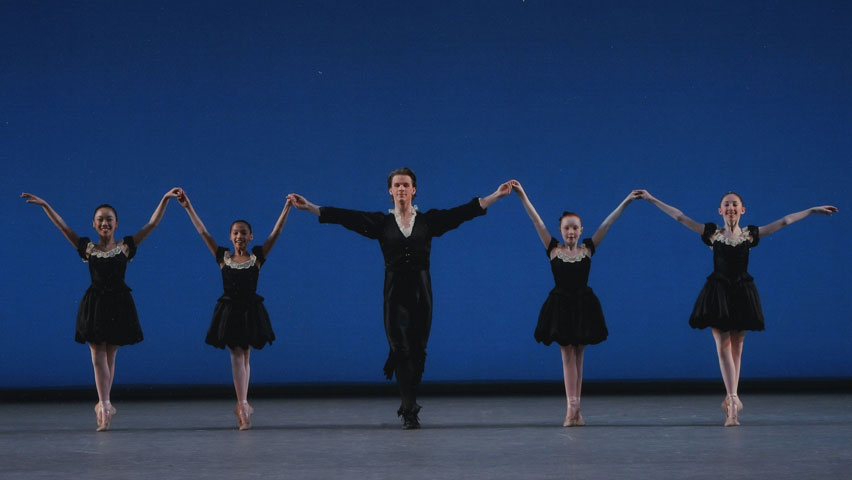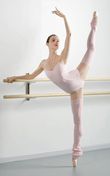But back to the Gigue as we know it today: you run out to center stage, the conductor makes eye contact with you and beats one measure for nothing with her baton, two triplet beats of 6/8, and it begins simply enough with three poses on the one beat of each triplet. A second voice enters and you begin dancing to each beat. The third voice joins and the syncopation begins, one two one two one two one two three one, before you join back up to the swing of the triplets for a nice balancé step. Then before you know it, you’re flying around the stage in a vaudevillian, topsy-turvy step,
As you jump to attitude front plié, be sure to count 4, 5, 6 because next, as the same music repeats, you begin counting one beat for every two counts 4 1/2 times, as you do a step that looks basically like you are, well, doing a gigue, turning around yourself 3-4 times before finishing it out with a 1, 3, 4, 5 hold six. Jump on one with your feet flexed, land on four, pose on five, and repeat a few times making a large semi-circle before catching back up to the swing of the 6/8 for the nice balancé step.
At this point, your focus turns to your legs as Balanchine turns his focus to larger phrases within the music of the second half of Mozart’s Little Gigue. Step phrases begin to last two bars, and you look at a bigger picture of repeating phrases building. This is why you have to focus on your legs: the larger jumps begin, and your legs begin to burn, which is why you make sure you are breathing. Balanchine gets into the heaviness of it all and emphasizes the one of each triplet: which means you are landing from jumps in a low plié now for the majority of the dance. You fly downstage on a diagonal as if pushing through a gentle barrier; you kick away imaginary obstacles (or the real obstacle of your stamina) to return to the level of elegance that preceded in the first section, as well as the syncopation.
And that’s the real beauty of this dance: it’s two minutes and fifteen seconds of the present. There’s no time to be anywhere else because you are thinking constantly, living in the moment. It’s only you out there. The more you rehearse this dance, the less thinking you have to do, but ultimately you are executing a dance of extreme precision, while testing your strength, musicality and stamina. When you come forward at the end for sixteen small jumps counting one-two for each one and ending in a surprise sissonne to the knee, you don’t bow, but stay there, still. Four women enter behind you and begin to dance. You can’t see them at first, but you know they are there behind you. You are still in the moment, because there is nowhere else to be, you can just breathe as you exit and cede the floor to the next twenty minutes of joyful, reverent musicality.



 RSS Feed
RSS Feed